SUMMARY
This is AI generated summarization, which may have errors. For context, always refer to the full article.
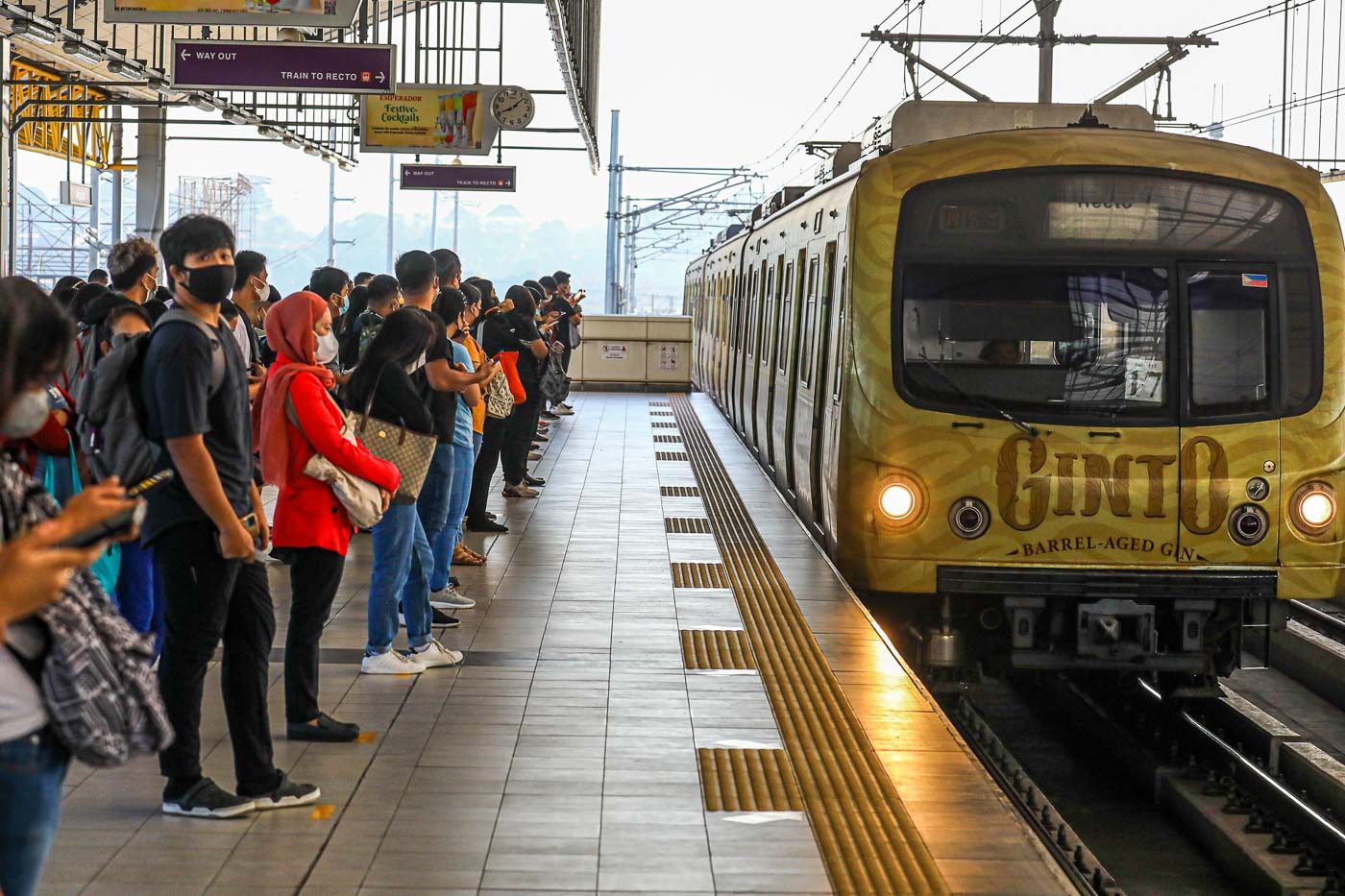
MANILA, Philippines – Fare hike proposals for the Light Rail Transit Line 1 (LRT-1), Light Rail Transit Line 2 (LRT-2), and Metro Rail Transit Line 3 (MRT-3) were opposed by several commuter groups invited by the Department of Transportation (DOTr) to a public hearing on Friday, February 17. But why are the rail line operators asking for a fare hike in the first place?
The consensus among all three operators is that an increase in fares has been long overdue – even years prior to the pandemic – causing their deficits to balloon into the billions.
Currently, the rail line operators use a standardized formula to determine a passenger’s total fare for a journey. To get the total fare, the distance between stations is first multiplied by a per-kilometer distance fare, which is then added to an initial boarding fare. Here’s the fare formula for passengers that use stored-value cards, or beep cards:
Total fare = boarding fare + (travel distance × distance fare)
The increase pitched by the rail operators is for both their initial boarding fare and distance fare, which means commuters will be paying more for all rides, regardless of the distance traveled. Jose Jobel Belarmino, who represented the Light Rail Transit Authority (LRTA), defended the fare hike proposals, saying they were consistent with the government’s “users pay” policy.
“The National Transport Policy is very clear on this that the government agency, in structuring the fare, should see to it that the cost of the operation and maintenance, as well as depreciation, should also be recovered, even at a minimum. Hindi ho sa ginagawa namin ito na walang policy (We’re not making this without a policy). It is the policy of the national government, even during the past administration, to implement the principle of ‘users pay’ and then the principle of recovering the cost, at least at a minimum,” Belarmino said during the public hearing.
Here are the minimum and maximum stored value fares that you would have to pay, according to the proposed new fare matrix.
| Line | Current fares | Proposed fares |
|---|---|---|
| LRT-1 | P11 – P30 | P17 – P44 |
| LRT-2 | P12 – P28 | P14 – P33 |
| MRT-3 | P13 – P28 | P17 – P34 |
Let’s now run through their reasons behind the proposed fare hikes.
Position of LRT-1
The LRT-1 is operated by the Light Rail Manila Corporation (LRMC), a private consortium composed of subsidiaries of Metro Pacific Investments Corporation, Ayala Corporation, and Macquarie Infrastructure Holdings (Philippines). The LRT-1 used to be managed by the government through the LRTA and the then-Department of Transportation and Communication, before a concession agreement brought it to the private sector’s hands.
According to LRMC representative Jhimmy Santiago, its concession agreement allows for fares to be adjusted 10.25% every two years since August 1, 2016, but its applications for a fare increase in 2016, 2018, and 2020 were all not acted upon by the government.
“Under the concession agreement po, the initial boarding fare was supposed to be P12.13 and the initial distance fare should be at P1.10 per kilometer. Hindi naman ito nasunod (This wasn’t followed). When we took over the LRT-1 system, the boarding fare and the distance fare is P11 + P1. ‘Yun na po siya sa simula (That was the fare since the start) in 2015 until now, 2023,” Santiago said.
The LRMC’s latest application bumps up the initial boarding fare to P16.46 and the distance fare to P1.50 per kilometer.
According to Santiago, the lack of fare increases has allowed LRMC’s deficit to balloon to P1.46 billion, net of offset. Citing higher power rates and inflation, LRMC claimed that without any fare increase, its deficit could reach P5.7 billion by 2025.
“Halos lahat ng modes of transportation, nabigyan na ng fare increase and subsidy. Ang LRT-1 po ay hindi. LRT-1 po sa ngayon ay pinakamurang mode of mass public transportation. Mas mura po kami kaysa sa jeep,” said Santiago, adding that the LRT-1 also has the lowest rates compared to other mass rail transport systems in Asian countries.
(Nearly all the modes of transportation have been given a fare increase and subsidy. The LRT-1 wasn’t given any. The LRT-1 is now the cheapest mode of mass public transportation. We’re even cheaper than jeeps.)
Position of LRT-2
The LRT-2 is operated by the LRTA, a government-owned and -controlled corporation under the Department of Transportation (DOTr).
Since the LRT-2 commenced operations in 2003, the LRTA said it had no movement in fares for 11 years until 2014. That places the current initial boarding fare at P11 and the distance fare at P1 per kilometer, the same as the LRT-1.
The LRTA is now proposing to increase the boarding fare to P13.29, and the distance fare to P1.21. The average passenger would have to pay about P4.50 more per trip, considering that the average trip is 8.51 kilometers in distance.
The LRTA said the fare increase would help it manage its P7.006 billion deficit and reduce the subsidies needed from the government. Currently, the government is subsidizing 51% of costs per passenger. With the fare adjustment, the LRTA said this subsidy would be brought down to 46%.
Position of MRT-3
The MRT-3 is currently still operated by Metro Rail Transit Corporation (MRTC), a private consortium composed of seven companies. However, the MRTC’s 25-year build-lease-transfer agreement with the government is set to lapse in 2025. This has led the DOTr to consider offering the operations of the MRT-3 for bidding – an arrangement similar to what it did for the LRT-1.
For the MRTC, however, the more immediate issue is the lack of fare increases over the years. Among the three rail lines, only the MRT-3 has a history of fare reduction. In 2000, the fares of the MRT-3 were reduced from an initial P17 – P34 to just P9 – P15. The MRTC argues that its proposed fare hike would merely restore its fares to its previous level in 2000.
According to the MRTC, the proposed fare increase would help address its P7.86 billion deficit and reduce its dependence on government subsidies. Currently, the government shoulders 76.8% of the expenses, equivalent to a subsidy of P88.34 per passenger. With the fare adjustment, the per-passenger subsidy would drop to P79.06.
“Particularly for the DOTr-MRT, the approval of the fare adjustment will unburden the national government with P1-billion subsidy to the rail line that can be used to expand its social services and other priority projects that directly benefit the poor,” the DOTr-MRT said on its Facebook page.
“We could forego with the P1 billion annual subsidy for the national government to realign to other priority projects,” MRT-3 General Manager Federico Canar Jr. said.
What does the commuting public think?
Stakeholder groups remained unconvinced, questioning why government subsidies for fares need to be reduced in the first place.
“Binibigyan kayo ng bilyon-bilyong subsidyo, at sa tingin naman namin, hindi sayang ang subsidy na ‘yan kapag napupunta po sa mga pasahero. At wala naman pong pahayag ang Kongreso, walang pahayag ang DOF, walang pahayag ang DBM, walang pahayag ang Malacañang na dapat magbawas ng subsidyo, so bakit pong pinangungunahan ng LRTA at MRT-3 ang pagbabawas ng subsidyo at pagpapasa ng fares doon sa mga commuters? Hindi po katanggap-tanggap. Hirap na po ‘yung tao, huwag na po natin pahirapan,” said Bagong Alyansang Makabayan secretary general Renato Reyes Jr. during the public hearing.
(You’re being given billions upon billions of subsidies, and we think that these subsidies aren’t being wasted if they go to the passengers. And there’s no statement from the Congress, no statement from the DOF, no statement from the DBM, no statement from Malacañang to reduce subsidies, so why is the LRTA and MRT-3 pushing to cut subsidies and pass fares onto commuters? This is unacceptable. People are already struggling, so let’s not make it worse.)
Anakbayan spokesperson Jeann Miranda also claimed that most of the LRT-1, LRT-2, and MRT-3’s funds are not from the government, but from “corporate funds and net lending.” She added that government subsidies for fares could also lighten the burden on commuters as they resettle in a reopening economy.
“Anakbayan’s stand on this is that the fare hike should not be approved, and the government should put more subsidy–not less subsidy–for the transportation of the Filipino people,” she said.
Representatives from a youth group and a group of factory workers also echoed this sentiment, pointing out that students returning to in-person classes and workers subsisting on minimum wage would be the hardest hit by the fare increase.
Transport group PISTON, who has butted heads with the government over numerous transport issues, criticized the decision to raise train fares – especially now when passengers are trying to cope with “the worsening economic crisis.”
“Ang pagtataas ng pamasahe sa mga tren at ang pag-phaseout sa mga traditional jeepneys ay kailanman hindi magiging solusyon sa lumalalang krisis sa transportasyon na pinalulubha pa na ng pagtaas ng implasyon at mababang kita ng mga Pilipino,” said Mody Floranda, PISTON national president in a press release on Friday.
(The increase in fares for trains and the phasing out of traditional jeepneys will never be the solution to the worsening transportation crisis, which is aggravated by the high inflation and the low wages of Filipinos.)
The fate of the fare hike proposals now depends on the decision of the Rail Regulatory Unit (RRU), as approved by the DOTr Secretary.
“Once approved by the secretary of the DOTr after thorough review and appraisal of the RRU, the train fare adjustment, which will revitalize revenue generation of the railway lines, is seen to improve their services and operations for the benefit of the riding public,” the DOTr said. – Rappler.com
Add a comment
How does this make you feel?
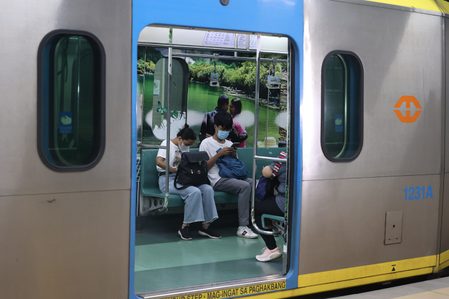
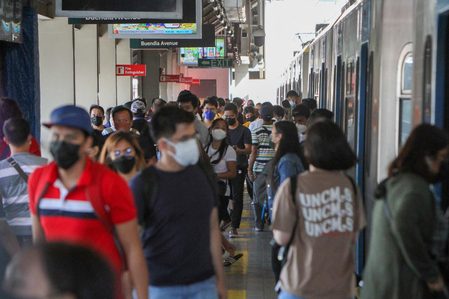
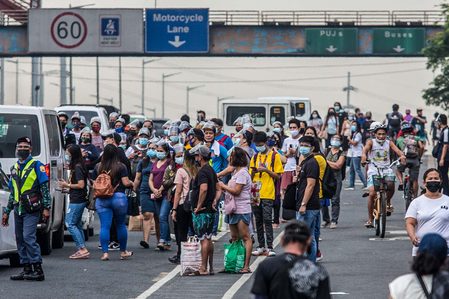
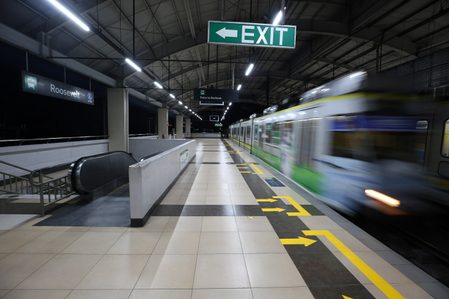




![[Under 3 Minutes] When will we see modern jeepneys on the road?](https://www.rappler.com/tachyon/2024/04/francisco-motors-modern-jeepney-prototype-1.jpg?resize=257%2C257&crop=590px%2C0px%2C1012px%2C1012px)
There are no comments yet. Add your comment to start the conversation.